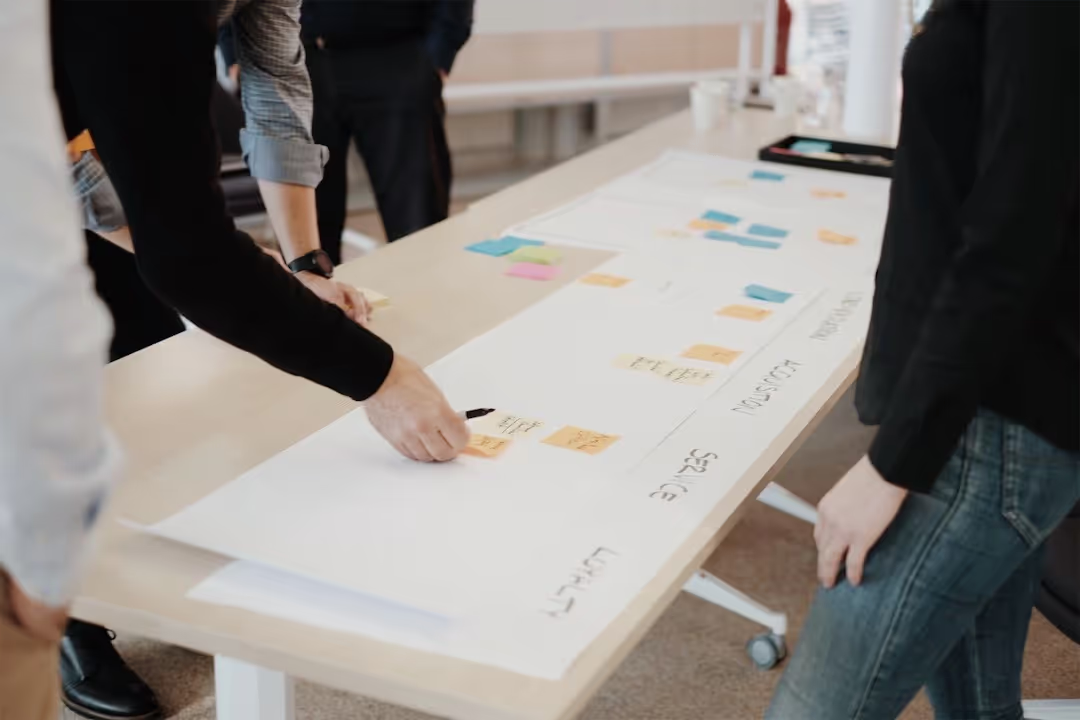We Design Sprint to create products effectively
A Humblebee Design Sprint is a short, intense process (usually 4–5 days) to help with the creation of digital products and services.

A Humblebee Design Sprint is a short, intense process (usually 4–5 days) to help with the creation of digital products and services.
Why Sprint?
The nature of our Humblebee sprints mean we can condense months of work into just one week. If you can bring the most appropriate people from your company and commit to one week with us, then we guarantee our process will boost your project and bring it nearer to reality. Don’t waste months of deliberating, invest in a week with us.
What happens during a Humblebee Sprint?
Each sprint at Humblebee is tailor-made for our client and their project. However if the goal for the client is a brand new digital product or service then our sprint week would include:
- Ideating new product ideas.
- Creation of a high-fidelity interactive prototype.
- Testing the prototype on real users.
- Using the test feedback to plan a next-step roadmap.
Should the sprint have a different goal (for example improving an existing digital product or service) then our sprint process would be planned accordingly, using workshop methods and techniques as required.

What happens after a Humblebee Sprint?
In the week after a new-product Humblebee Sprint we would help tweak and polish the prototype based on the user feedback. Often our clients use this prototype to push their project further forward to realisation, for example to showcase internally at their company and help plan their next move.
Our Design Sprint is not the end goal.
Our sprint process is an excellent, time-boxed, process for pushing you and your team forward, and pushing your digital product nearer to reality. However our goal is not to complete a sprint for sprint’s sake.
Our goal is to use the sprint as a catalyst to roadmap the development & next stage of your product.
Humblebee are not satisfied until we have helped our clients get their product onto market or launched live ‘for real’. You can only truly iterate when launched. The market decides!
We want to take your prototype into production and onto market as rapidly as possible. Using our process your end product will be validated as a service people need, want and be prepared to pay for.
Why Humblebee?
We’re a factory, not a theatre. Working with Humblebee means we cut through all b*llshit and unnecessary processes, strategies, endless powerpoints and beard-stroking to cut to the chase: we find & build amazing digital products for your company. Our Core Platform for building digital projects allows us to go from idea to prototype to juicy coded product quicker than any other agency.
If you’d like to learn more about a Design Sprint with Humblebee you can call or email me. I’m open 24/7.
Contact:
Russell Clark
e.russell.clark@humblebee.se
t. +46 (0)734 359 741
w. humblebee.se
More stories






